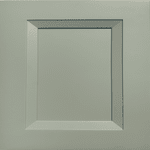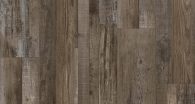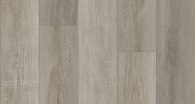
House flippers often tend to fail because they pick the wrong house. Every house you flip should maximize your profit potential and minimize risk. It’s a high-stakes business and something as trivial as the shape of the lot or unusual exteriors can be the reason why you lose money where you set out to make some. Successful house flippers are masters at spotting the kind of houses that make profitable flips. And they know that a great deal on the property does not automatically convert into great profits on the flip.
Here are the Five Ws and One H you must consider before you pick a house to flip.
1. Where Is The House

While you’re considering if the location is going to be convenient for future owners, don’t ignore any problems you may encounter while doing the flip. You must take this into consideration especially if you’re working on multiple projects and need to move between projects throughout the day. If the house is located too far away from your other projects, factor that in too.
2. What’s Around the House
While you’re at it, take a look at what immediately surrounds the house: Unkempt neighboring lots? Busy streets? Neighbors with “unique” hobbies like bee keeping? Or, domestic issues that are clearly out of control (think screaming, loud music or, openly fighting spouses)? To get a better understanding of the neighborhood, take a walk around the block, strike up a casual conversation with local shop owners and most importantly, check up on the crime rate in the neighborhood. Your flip will not sell if your prospects feel threatened or uncomfortable.
3. Why It Will Make You Profit

Can the house easily be made more open (by knocking down a couple of non-load bearing walls); does it have a foyer, an in-house laundry space, large closets and ample storage spaces; or, a garage that’s near the kitchen for easy accessibility? If yes, then you have a winner. However, even if the house has all of the above but is out of the budget range of most people, then be open to it being on the market for a longer time.
4. When Was The House Built
If the house you’re considering was built before 1978, then really reconsider taking it up – these houses were painted with lead-based paints and rehabbing them means following stringent laws that govern the process. Adhering to the Renovation, Repair and Painting (RRP) laws, laid down by the Environmental Protection Agency (EPA), can not only be time-consuming but also burn a hole in your pocket.
Besides, you will have to be ready (think documenting every single repair or renovation work) to face any audits by the EPA. If you’re not careful, you could wind up with fines that are more than what it cost you to buy the property in the first place. Apart from all these issues, these homes tend to have outdated floorplans which aren’t suited to the tastes and lifestyles of current home buyers.
5. Which is better: A Unique House Or A Cookie Cutter House

While they may be beautiful to look at and may create some level of curiosity in passers by, these homes are often not spaces where routine life can be lived. Not only is it going to take you more time to convert a “unique” house into something more conforming (to the rest of the neighborhood), it’s also going to cost you more money to do that.
Cookie cutter homes, on the other hand, may seem boring but they make for great flips. They often cover most of the items on a homebuyer’s checklist, without calling too much attention to themselves. While they don’t look any different from the neighbor’s house, these homes offer great space for sensible renovations, which can be customized easily and according to the needs of potential buyers.
6. How Long Will It Take to Rehab
The time that it might take you to complete a flip and put the house back on the market is an important consideration before you buy a property. Besides considering the scope of the remodelling, the time it will take to wrap up the flip and the availability of contractors, check what season it will be when the work is completed. Research and logic shows that home sales tend to drop during winters and peak during summers – people are more likely to check out homes to buy when it’s nice and warm outside.

Room-by-Room
While you’re checking out houses to flip, don’t forget to consider what each room in the house requires – from the basement to bathrooms, check what opportunities or contingencies each room presents. Finding answers to all these questions can be key to succeeding at the house flipping business.



























































